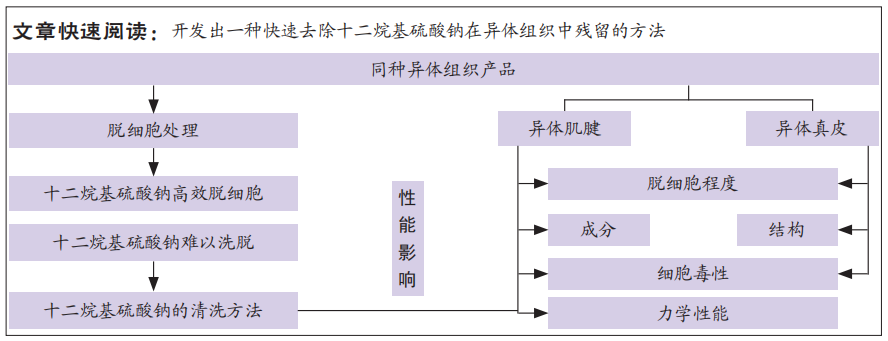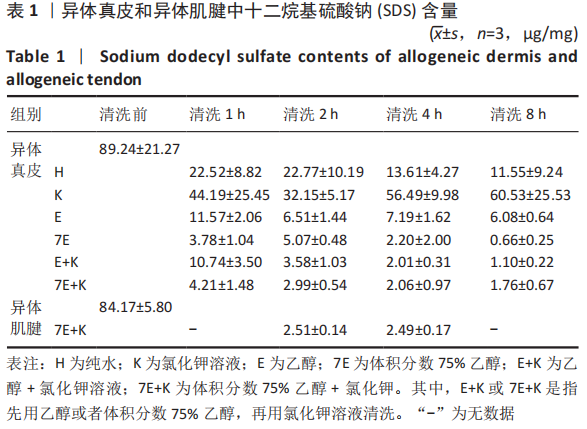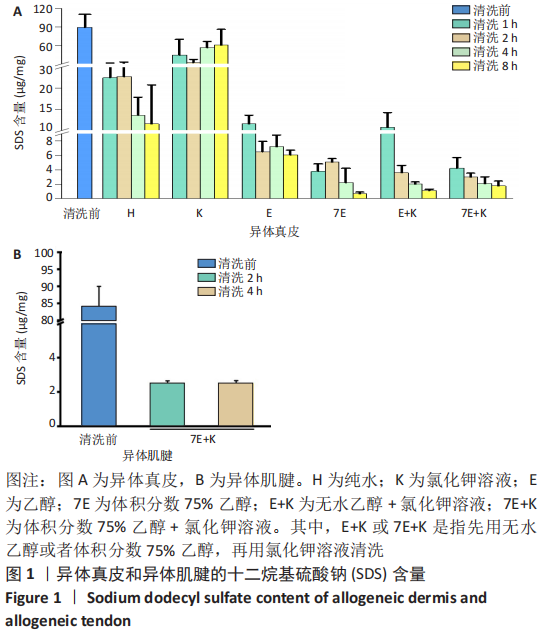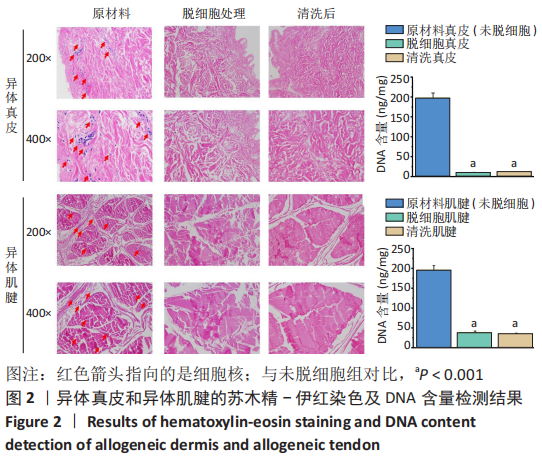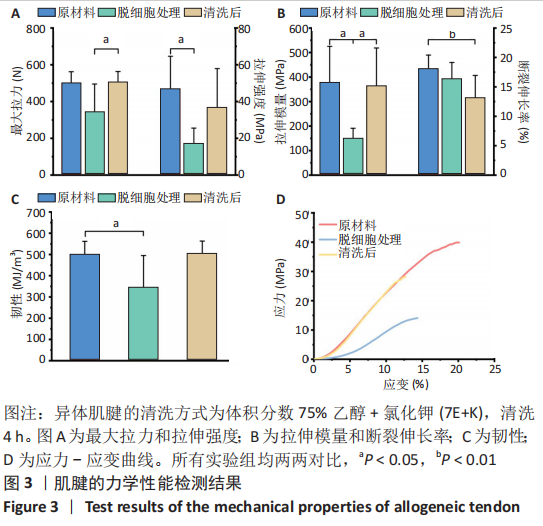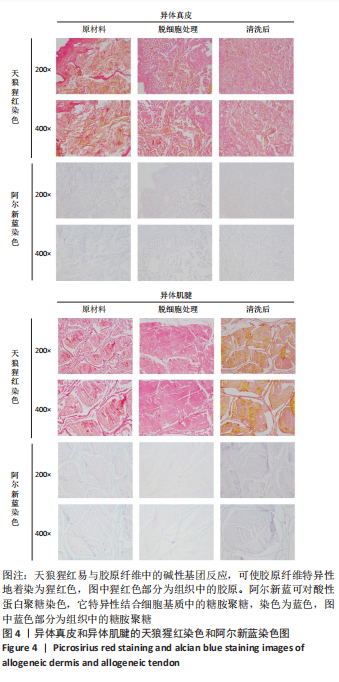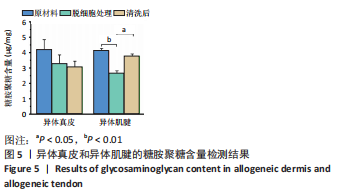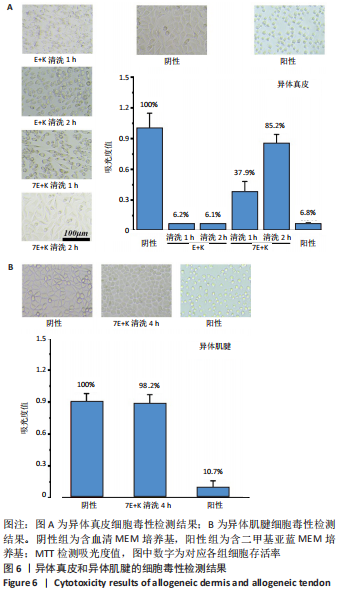[1] PORZIONATO A, STOCCO E, BARBON S, et al. Tissue-Engineered Grafts from Human Decellularized Extracellular Matrices: A Systematic Review and Future Perspectives. Int J Mol Sci. 2018;19(12):4117.
[2] SCHNEIDER KH, ENAYATI M, GRASL C, et al. Acellular vascular matrix grafts from human placenta chorion: Impact of ECM preservation on graft characteristics, protein composition and in vivo performance. Biomaterials. 2018;177:14-26.
[3] HUSSEIN KH, PARK KM, KANG KS, et al. Biocompatibility evaluation of tissue-engineered decellularized scaffolds for biomedical application. Mater Sci Eng C Mater Biol Appl. 2016;67:766-778.
[4] WANG S, WANG Y, SONG L, et al. Decellularized tendon as a prospective scaffold for tendon repair. Mater Sci Eng C Mater Biol Appl. 2017;77: 1290-1301.
[5] MANALASTAS TM, DUGOS N, RAMOS G, et al. Effect of Decellularization Parameters on the Efficient Production of Kidney Bioscaffolds. Appl Biochem Biotechnol. 2021;193(5):1239-1251.
[6] LOPERA HIGUITA M, GRIFFITHS LG. Antigen removal process preserves function of small diameter venous valved conduits, whereas SDS-decellularization results in significant valvular insufficiency. Acta Biomater. 2020;107:115-128.
[7] KASIMIR MT, RIEDER E, SEEBACHER G, et al. Comparison of different decellularization procedures of porcine heart valves. Int J Artif Organs. 2003;26(5):421-427.
[8] BROUKI MILAN P, PAZOUKI A, JOGHATAEI MT, et al. Decellularization and preservation of human skin: A platform for tissue engineering and reconstructive surgery. Methods. 2020;171:62-67.
[9] WONG ML, WONG JL, VAPNIARSKY N, et al. In vivo xenogeneic scaffold fate is determined by residual antigenicity and extracellular matrix preservation. Biomaterials. 2016;92:1-12.
[10] GRATZER PF, HARRISON RD, WOODS T. Matrix alteration and not residual sodium dodecyl sulfate cytotoxicity affects the cellular repopulation of a decellularized matrix. Tissue Eng. 2006;12(10):2975-2983.
[11] PENNAROSSA G, GHIRINGHELLI M, GANDOLFI F, et al. Whole-ovary decellularization generates an effective 3D bioscaffold for ovarian bioengineering. J Assist Reprod Genet. 2020;37(6):1329-1339.
[12] GRATZER PF, PEREIRA CA, LEE JM. Solvent environment modulates effects of glutaraldehyde crosslinking on tissue-derived biomaterials. J Biomed Mater Res. 1996;31(4):533-543.
[13] 徐丽明,邵安良,赵艳红.动物源性生物材料残留DNA的定量检测法[J].生物医学工程学杂志,2012,29(3):479-485.
[14] ENOBAKHARE BO, BADER DL, LEE DA. Quantification of sulfated glycosaminoglycans in chondrocyte/alginate cultures, by use of 1,9-dimethylmethylene blue. Anal Biochem. 1996;243(1):189-191.
[15] 胡凯,陈维明,骆井万,等.过氧乙酸/乙醇对异体皮性能的影响[J].中国组织工程研究,2022,26(10):1537-1543.
[16] GILBERT TW, SELLARO TL, BADYLAK SF. Decellularization of tissues and organs. Biomaterials. 2006;27(19):3675-3683.
[17] MORRIS AH, STAMER DK, KYRIAKIDES TR. The host response to naturally-derived extracellular matrix biomaterials. Semin Immunol. 2017;29:72-91.
[18] SCHANER PJ, MARTIN ND, TULENKO TN, et al. Decellularized vein as a potential scaffold for vascular tissue engineering. J Vasc Surg. 2004; 40(1):146-153.
[19] MANCUSO L, GUALERZI A, BOSCHETTI F, et al. Decellularized ovine arteries as small-diameter vascular grafts. Biomed Mater. 2014;9(4): 045011.
[20] BADYLAK SF. The extracellular matrix as a biologic scaffold material. Biomaterials, 2007;28(25):3587-3593.
[21] WOLF MT, DALY KA, REING JE, et al. Biologic scaffold composed of skeletal muscle extracellular matrix. Biomaterials. 2012;33(10):2916-2925.
[22] LI J, CAI Z, CHENG J, et al. Characterization of a heparinized decellularized scaffold and its effects on mechanical and structural properties. J Biomater Sci Polym Ed. 2020;31(8):999-1023.
[23] KIM H, CHOI KH, SUNG SC, et al. Effect of ethanol washing on porcine pulmonary artery wall decellularization using sodium dodecyl sulfate. Artif Organs. 2022;46(7):1281-1293.
[24] SERGHEI C, IGOR T, THOMAS J, et al. Detergent Decellularization of Heart Valves for Tissue Engineering: Toxicological Effects of Residual Detergents on Human Endothelial Cells. Artif Organs. 2010;34(3): 206-210.
[25] CRAPO PM, GILBERT TW, BADYLAK SF. An overview of tissue and whole organ decellularization processes. Biomaterials. 2011;32(12):3233-3243.
[26] ZAMBON JP, KO IK, ABOLBASHARI M, et al. Comparative analysis of two porcine kidney decellularization methods for maintenance of functional vascular architectures. Acta Biomater. 2018;75:226-234.
[27] KUO S, KIM HM, WANG Z, et al. Comparison of two decellularized dermal equivalents. J Tissue Eng Regen Med. 2018;12(4):983-990.
[28] BONDIOLI E, PURPURA V, ORLANDI C, et al. The use of an acellular matrix derived from human dermis for the treatment of full-thickness skin wounds. Cell Tissue Bank. 2019;20(2):183-192.
[29] 骆井万,胡凯,李淼,等.夹带剂对超临界萃取技术处理肌腱的影响[J].中国矫形外科杂志,2021,29(4):338-341.
[30] GRECO KV, FRANCIS L, HUANG H, et al. Is quercetin an alternative natural crosslinking agent to genipin for long-term dermal scaffolds implantation? J Tissue Eng Regen Med. 2018;12(3):e1716-e1724.
[31] RYOU H, TURCO G, BRESCHI L, et al. On the stiffness of demineralized dentin matrices. Dent Mater. 2016;32(2):161-170.
[32] ROSETY M, ORDÓÑEZ FJ, ROSETY-RODRÍGUEZ M, et al. Acute toxicity of anionic surfactants sodium dodecyl sulphate (SDS) and linear alkylbenzene sulphonate (LAS) on the fertilizing capability of gilthead (Sparus aurata L.) sperm. Histol Histopathol. 2001;16(3):839-843.
[33] SUZUKI H, TERADA T. Removal of dodecyl sulfate from protein solution. Anal Biochem. 1988;172(1):259-263.
[34] FAULK DM, CARRUTHERS CA, WARNER HJ, et al. The effect of detergents on the basement membrane complex of a biologic scaffold material. Acta Biomater. 2014;10(1):183-193.
[35] HWANG J, SAN BH, TURNER NJ, et al. Molecular assessment of collagen denaturation in decellularized tissues using a collagen hybridizing peptide. Acta Biomater. 2017;53:268-278.
[36] LING Y, XU W, YANG L, et al. Improved the biocompatibility of cancellous bone with compound physicochemical decellularization process. Regen Biomater. 2020;7(5):443-451.
[37] 王学民,DAVID B, HEATHER G.中国人皮肤对不同浓度SDS刺激反应的观察[J].卫生毒理学杂志,1998,12(1):57-59.
[38] 刘洋.分子、细胞水平研究三种类型表面活性剂的毒性效应与机理[D].济南:山东大学,2018.
|
